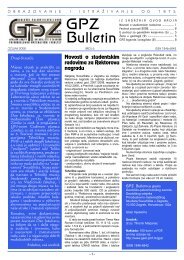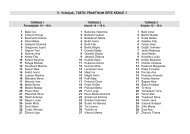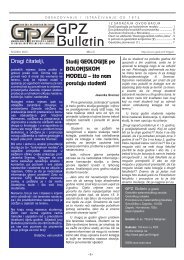Purified Phytohaemagglutinin
Purified Phytohaemagglutinin
Purified Phytohaemagglutinin
Create successful ePaper yourself
Turn your PDF publications into a flip-book with our unique Google optimized e-Paper software.
E8E28-0130852801C03HA16GB<strong>Purified</strong><strong>Phytohaemagglutinin</strong>HA16© 2001 Remel Inc. / Printed in the UK / Murex <strong>Purified</strong> <strong>Phytohaemagglutinin</strong>1
PURIFIED PHYTOHAEMAGGLUTININ<strong>Phytohaemagglutinin</strong> (PHA), derived from extracts of Phaseolus vulgarisseeds, has been used for a number of years, on account of its twinproperties of causing erythroagglutination and of stimulating progressivelymphocyte mitosis in cell culture 3,5,13,18 . Both agglutinating and mitogenicactivities appear to be associated with the protein fractions of crudeextracts, which are sufficiently alike in their physico-chemical propertiesto have caused difficulty in attempts to separate them 1,17,19 . One otherfactor complicating fractionation procedures has been the slow andimprecise method of assay for the mitogenic activity. Fortunately,relatively crude extracts selected for their ability to yield good mitoticpictures (as in reagent grade Phytohaemagglutin) have proved entirelysatisfactory for use in routine lymphocyte culture for chromosomestudies. PHA has proved of interest in the study of the immuneresponse 2,6,7 lymphocyte kinetics 4,9,14,15,20 , and bone marrowdynamics 8,10,12 , and for these purposes it is desirable that a substanceof more closely reproducilble qualities and known potency should beused. Improvements in the technique of assaying mitogenic activity 16have made it possible to quote a value for each batch of <strong>Purified</strong><strong>Phytohaemagglutinin</strong> in terms of a reference standard preparation.COMPOSITION<strong>Purified</strong> <strong>Phytohaemagglutinin</strong> is a freeze-dried, highly refined proteinfraction of selected Phaseolus spp. seed extract in which the specificmitogenic activity and the mitogenic/haemagglutinating activity ratiohave been increased by a factor of about 100/1 during purification 11 .Each bottle contains the stated weight and activity of PHA, dried froma small volume of buffered saline without preservative.PRECAUTIONSFor in vitro diagnostic use.Although <strong>Purified</strong> <strong>Phytohaemagglutinin</strong> may be employed for routinelymphocyte culture, the conditions necessary for its successful useare much more stringent than those required for less pure reagents.In particular, the concentration of PHA giving maximal lymphocytestimulation without inhibition or toxicity lies within very narrow limits.The use of Reagent Grade <strong>Phytohaemagglutinin</strong> is recommended forall purposes that do not require precise dosage of mitogen with minimalhaemagglutinating activity and inactive impurities.RECONSTITUTIONThe reagent may be reconstituted to any desired volume in sterile saline(if buffered, preferably to a pH between 6.5 and 8) or distilled water,using a sterile disposable hypodermic syringe. The cap of the bottleshould be sterilized by wiping with ether, the needle should pierce thecentre of the rubber plug and be held in a vertical position duringreconstitution. If desired, the risk of bacterial contaminationof reconstituted <strong>Phytohaemagglutinin</strong> may be minimized by addition ofa few drops of chloroform to the solution: alternatively, antibioticsor any of the usual preservatives may be added if the proposed use ofthe reagent permits.LIFE AND STORAGEThe dried material will retain full potency at least until the date shownon the bottle label when stored at 2 to 8°C. The reconstituted materialmay be stored at –20°C for six months or at 2 to 8°C for two weekswithout loss of activity (in the absence of bacterial contamination).PRESENTATIONBottles of 2 mg (dried) HA 16BIBLIOGRAPHY1Börjeson, J. et al. (1964). Purification of the Mitosis-Stimulating Factor fromPhaseolus vulgaris. Biochim, biophys. Acta, 82,158.2Calne, R.Y., Wheeler, J.R. and Hurn, B.A.L. (1965) CombinedImmunosuppressive Action of Phytohaemagglutination and Azathioprine (Imuran)on dogs with Renal Homotransplants. Brit. Med. J., ii,154.3Carstairs, K. (1962). The Human small Lymphocyte: Its possible PluripotentialQuality. Lancet, i, 829.4Cooper, E.H., Barkhan, P. and Hale, A.J. (1963). Observations on theProliferation of Human Leucocytes Cultured with <strong>Phytohaemagglutinin</strong>. Brit. J.Haemat., 9, 101.5Dorset, M. and Henley, R.R. (1916). Production of clear and sterilized Anti-Hog-Cholera Serum. J. agric. Res., 6, i, 333.6Elves, M.W. (1966). In Proc. Symp. ‘Biological Effects of <strong>Phytohaemagglutinin</strong>’.Robert Jones and Agnes Hunt Orthopaedic Hospital Management Committee,Oswestry, England, 11-26.7Gamble, C.N. (1966). The effect of Phytohemagglutinin on the Primary Antibodyresponse of mice to rat Erythrocytes and Human Gamma Globulin. Int. Arch.Allergy, 29, 470.8Hayes, D.M. and Spurr, C.L. (1966). Use of Phytohemagglutinin to stimulateHematopoiesis in humans. Blood, 27, 78.9Holm, G. and Perimann, P. (1965). <strong>Phytohaemagglutinin</strong>-Induced Cytotoxicaction of Unsensitized Immunologically competent cells on Allogeneic andXenogeneic tissue culture cells. Nature (Lond.), 207, 818.10Humble, J.G. (1964). The treatment of Aplastic Anaemia with<strong>Phytohaemagglutinin</strong>. Lancet, i, 1345.11Hurn, B.A.L. (1966). In Proc. Symp. ‘Biological Effects of <strong>Phytohaemagglutinin</strong>’.Robert Jones and Agnes Hunt Orthopaedic Hospital Management Committee,Oswestry, England, 83-95.12Israel, L., Sors, Ch. and Bernard, Et. (1966). La Polychimiothérapie prolongéedes cancers Broncho-Pulmonaires inopérables. Sem. Hôp. Paris, 29, 1825.13Li, J.G. and Osgood, E.E. (1949). A method for the rapid separation ofLeukocytes and Nucleated Erythrocytes from blood or marrow with aPhytohemagglutinin from red beans (Phaseolus vulgaris). Blood, 4, 670.14Ling, N.R. (1968).‘Lymphocyte Stimulation’. Amsterdam; North Holland Press.15McIntyre, O.R. and Ebaugh, F.G. (1962). The effect of Phytohemagglutinin onLeukocyte cultures as measured by p32 incorporation in the DNA, RNA, andAcid Soluble Fractions. Blood. 19, 443.16Mosedale, M.B. and Parke, J.A.C. (1966). Assay of the Lymphocyte stimulatingfactor in <strong>Phytohaemagglutinin</strong>. In Proc. Symp. ‘Biological Effects of<strong>Phytohaemagglutinin</strong>’. Robert Jones and Agnes Hunt Orthopaedic HospitalManagement Committee, Oswestry, England, 97-103.17Nordman, C.T., de la Chapelle, A. and Gräsbeck, R. (1964). The Interrelationsof Erythroagglutinating, Leucoagglutinating and Leucocyte-mitogenic Activitiesin Phaseolus vulgaris <strong>Phytohaemagglutinin</strong>. Acta med. scand. Suppl., 412.18Nowell, P.C. (1960). <strong>Phytohaemagglutinin</strong>: An initiator of Mitosis in Cultures ofNormal Human Leukocytes. Cancer Res., 20, 462.19Rigas, D.A. and Johnson, E.A. (1964). Studies on the Phytohemagglutinin ofPhaseolus vulgaris and its Mitogenicity. Ann. N.Y. Acad Sci., 113, 800.20Sell, S., Rowe, D.S. and Gell, P.G.H. (1965). Studies on rabbit Lymphocytes InVitro J.exp. Med., 122, 823.Manufactured for:Remel Inc.Manufactured by:Murex Biotech LimitedCentral Road, Temple HillDartford, Kent, DA1 5LRUKAvailable in the U.S.A. from:12076 Santa Fe DriveLenexa, KS 66215For Technical Assistance call:Toll Free - 800 255 6730 / 913 888 0939C03HA16GBApril 20012



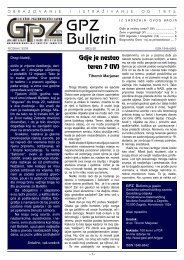
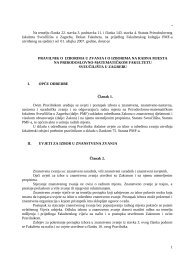
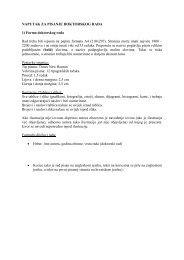
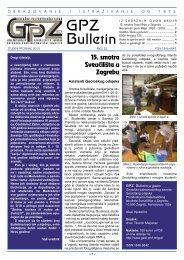


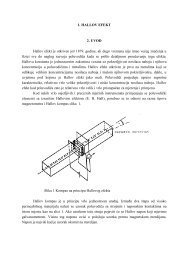
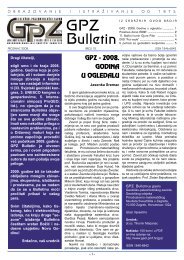

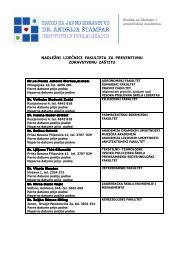
![Rasjedi i navlake [1,5 MiB]](https://img.yumpu.com/44844734/1/190x143/rasjedi-i-navlake-15-mib.jpg?quality=85)
